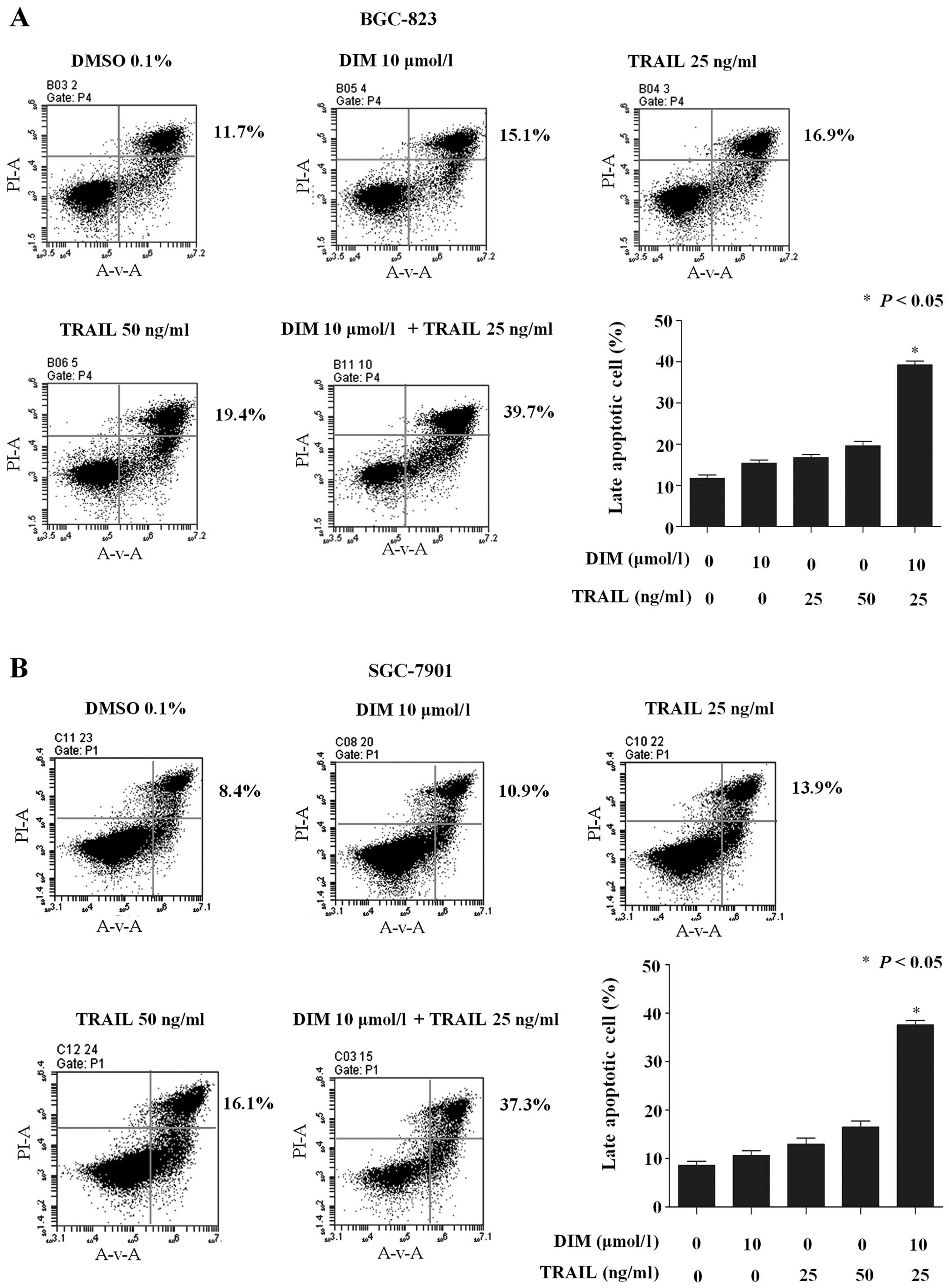|
1
|
Parkin DM, Bray F, Ferlay J and Pisani P:
Global cancer statistics, 2002. CA Cancer J Clin. 55:74–108. 2005.
View Article : Google Scholar : PubMed/NCBI
|
|
2
|
Ashkenazi A and Dixit VM: Death receptors:
signaling and modulation. Science. 281:1305–1308. 1998. View Article : Google Scholar : PubMed/NCBI
|
|
3
|
Belkhiri A, Zhu S, Chen Z, et al:
Resistance to TRAIL is mediated by DARPP-32 in gastric cancer. Clin
Cancer Res. 18:3889–3900. 2012. View Article : Google Scholar : PubMed/NCBI
|
|
4
|
Lane D, Côté M, Grondin R, et al: Acquired
resistance to TRAIL-induced apoptosis in human ovarian cancer cells
is conferred by increased turnover of mature caspase-3. Mol Cancer
Ther. 5:509–521. 2006. View Article : Google Scholar : PubMed/NCBI
|
|
5
|
Scott EN, Gescher AJ, Steward WP and Brown
K: Development of dietary phytochemical chemopreventive agents:
biomarkers and choice of dose for early clinical trials. Cancer
Prev Res (Phila). 2:525–530. 2009. View Article : Google Scholar : PubMed/NCBI
|
|
6
|
Fujioka N, Ainslie-Waldman CE, Upadhyaya
P, et al: Urinary 3,3′-diindolylmethane: a biomarker of
glucobrassicin exposure and indole-3-carbinol uptake in humans.
Cancer Epidemiol Biomarkers Prev. 23:282–287. 2014. View Article : Google Scholar : PubMed/NCBI
|
|
7
|
Schröder M and Kaufman RJ: The mammalian
unfolded protein response. Annu Rev Biochem. 74:739–789. 2005.
View Article : Google Scholar : PubMed/NCBI
|
|
8
|
Rutkowski DT and Kaufman RJ: A trip to the
ER: coping with stress. Trends Cell Biol. 14:20–28. 2004.
View Article : Google Scholar : PubMed/NCBI
|
|
9
|
El-Deiry WS: Insights into cancer
therapeutic design based on p53 and TRAIL receptor signaling. Cell
Death Differ. 8:1066–1075. 2001. View Article : Google Scholar : PubMed/NCBI
|
|
10
|
Yamaguchi H and Wang HG: CHOP is involved
in endoplasmic reticulum stress-induced apoptosis by enhancing DR5
expression in human carcinoma cells. J Biol Chem. 279:45495–45502.
2004. View Article : Google Scholar : PubMed/NCBI
|
|
11
|
Wang S, Wu X, Chen Y, et al: Prognostic
and predictive role of JWA and XRCC1 expressions in gastric cancer.
Clin Cancer Res. 18:2987–2996. 2012. View Article : Google Scholar : PubMed/NCBI
|
|
12
|
Szegezdi E, Logue SE, Gorman AM and Samali
A: Mediators of endoplasmic reticulum stress-induced apoptosis.
EMBO Rep. 7:880–885. 2006. View Article : Google Scholar : PubMed/NCBI
|
|
13
|
Lee SH, Min KW, Zhang X and Baek SJ:
3,3′-diindolylmethane induces activating transcription factor 3
(ATF3) via ATF4 in human colorectal cancer cells. J Nutr Biochem.
24:664–671. 2013. View Article : Google Scholar : PubMed/NCBI
|
|
14
|
Yin XF, Chen J, Mao W, et al: A selective
aryl hydrocarbon receptor modulator 3,3′-diindolylmethane inhibits
gastric cancer cell growth. J Exp Clin Cancer Res. 31:462012.
View Article : Google Scholar : PubMed/NCBI
|
|
15
|
Jalving M, Heijink DM, Koornstra JJ, et
al: Regulation of TRAIL receptor expression by β-catenin in
colorectal tumours. Carcinogenesis. 35:1092–1099. 2014. View Article : Google Scholar : PubMed/NCBI
|
|
16
|
Abdelrahim M, Newman K, Vanderlaag K, et
al: 3,3′-diindolylmethane (DIM) and its derivatives induce
apoptosis in pancreatic cancer cells through endoplasmic reticulum
stress-dependent upregulation of DR5. Carcinogenesis. 27:717–728.
2006. View Article : Google Scholar : PubMed/NCBI
|
|
17
|
Yoshida T, Shiraishi T, Nakata S, et al:
Proteasome inhibitor MG132 induces death receptor 5 through
CCAAT/enhancer-binding protein homologous protein. Cancer Res.
65:5662–5667. 2005. View Article : Google Scholar : PubMed/NCBI
|
|
18
|
Chen S, Liu X, Yue P, et al:
CCAAT/enhancer binding protein homologous protein-dependent death
receptor 5 induction and ubiquitin/proteasome-mediated cellular
FLICE-inhibitory protein down-regulation contribute to enhancement
of tumor necrosis factor-related apoptosis-inducing ligand-induced
apoptosis by dimethyl-celecoxib in human non small-cell lung cancer
cells. Mol Pharmacol. 72:1269–1279. 2007. View Article : Google Scholar : PubMed/NCBI
|
|
19
|
Yang JF, Cao JG, Tian L and Liu F:
5,7-Dimethoxyflavone sensitizes TRAIL-induced apoptosis through DR5
upregulation in hepatocellular carcinoma cells. Cancer Chemother
Pharmacol. 69:195–206. 2012. View Article : Google Scholar : PubMed/NCBI
|
|
20
|
Görlach A, Klappa P and Kietzmann T: The
endoplasmic reticulum: folding, calcium homeostasis, signaling, and
redox control. Antioxid Redox Signal. 8:1391–1418. 2006. View Article : Google Scholar : PubMed/NCBI
|
|
21
|
Malhotra JD and Kaufman RJ: The
endoplasmic reticulum and the unfolded protein response. Semin Cell
Dev Biol. 18:716–731. 2007. View Article : Google Scholar : PubMed/NCBI
|













